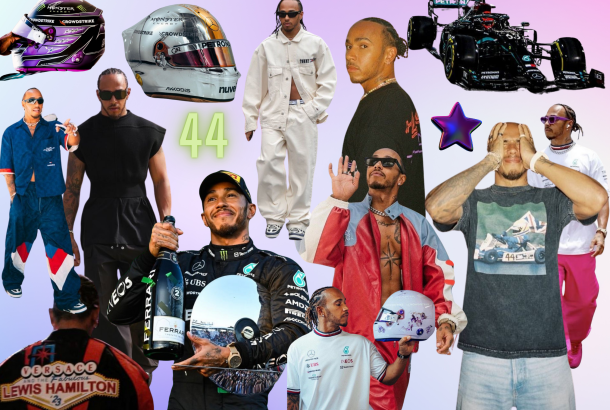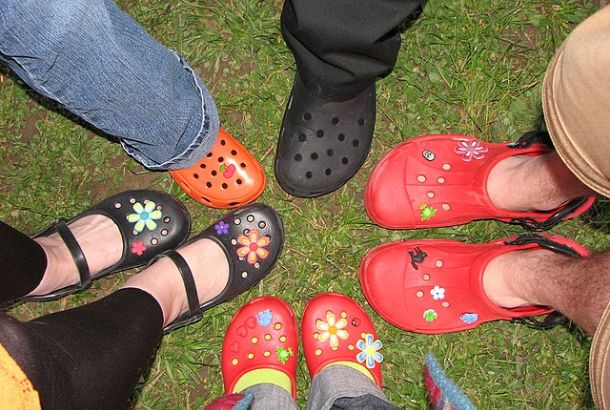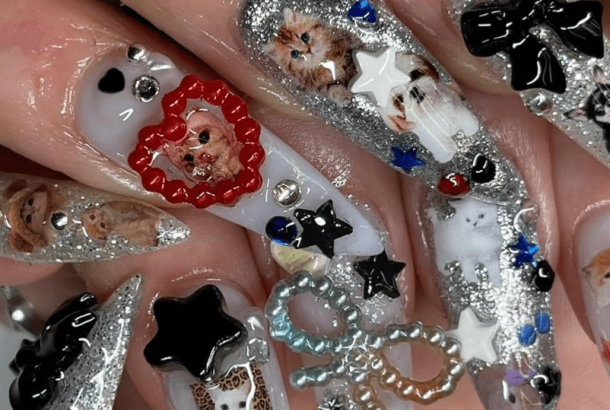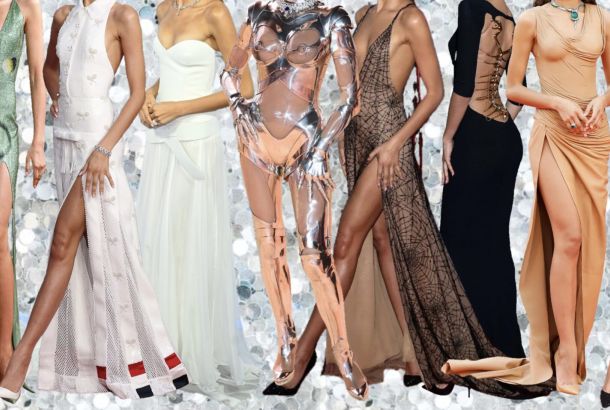Art x Fashion
By Sophie Walsh
Art and fashion. The two words go together like Leonardo DiCaprio and Victoria secret models.
The collaboration between art and fashion is nothing new. For example, in 1965, Yves Saint Laurent revealed his iconic Fall Mondrian Collection. This was inspired by the works of Dutch abstract artist Piet Mondrian, founder of the Avant-Garde De Stijl, Neoplasticism movement.
Mondrian idealised the strict geometry of horizontals and verticals, as well as a primary colour palette, to reflect the invisible order of the world. Laurent designed six A-line cocktail dresses directly referencing this abstract formula.
Despite Mondrian creating this particular body of his work circa 1914 to 1940, Laurent’s Mondrian inspired dresses seemed more relevant than ever in the context of the swinging 60’s. An age where advances in science, technology, and society made possibilities of modernity seem limitless. There was a sudden yearning to reject the ‘make do and mend’ culture of the war years, where design had taken a back seat in favour of utility.
Instead, cutting edge designers began to favour a new minimal approach, based on the same design philosophy as artists such as Piet Mondrian. If such dresses had been created while Mondrian had been living in the backdrop of war, they would not have been received by the mainstream in the same celebrated way.
Most recent fashion x art collaborations favour historical works, rather than those by contemporary artists. For example, despite the fact that American Pop artist Jeff Koons collaborated with Louis Vuitton in April 2017, then again in October for his new two-part collection, whose work did we see on the bags? The old Masters.
In the aptly named ‘Masters’ collection, we see the art of Da Vinci, Titian, Fragonard, Van Gogh, Rubens, Boucher, Gaugin, Manet, Monet, Poussin, and Turner.
Yeah, it’s great and all. I would even go so far as to say that it’s my favourite design collaboration of 2017. Who doesn’t love a classic?
But where is Koons’ Balloon Dog? Or his Seated Ballerina? Or infamous Michael Jackson and Bubbles? All works of world renown and modern cultural significance.
Vuitton has in the past collaborated with numerous contemporary artists, examples include the graffiti inspired collection with New Yorker Stephen Sprouse in 2001 and the 2012 collaboration with 83-year-old Japanese artist Yayoi Kusama, featuring her dotty artwork. Each collection has encapsulated an artist’s signature style.
Vuitton is not alone in artistic collaborations either, with various catwalk shows incorporating the works of contemporary artists over the decades. However, despite a small nod to Koons’ inflatable rabbit in the shape of a leather tag and a feeble wink to his Gazing Ball series that included plaster reproductions of famous ancient sculptures, the prints are not original and certainly not his own.
Likewise, Dr. Martens, in a collaboration with Tate Britain, have slapped the work of English 18th century Romantic painter and poet William Blake on to the iconic boot as well as other items. Blake was a man influenced by spiritualism and the supernatural; the 1826 work ‘Satan Smiting Job with Sore Boils’, has been chosen to best exemplify this. In a statement by the company, they said that the “misunderstood visionary William Blake embodies the spirit of a Dr. Martens wearer — rebellious, free-thinking, and creative”. A man that by the sounds of it, perhaps belongs in 2017, rather than Georgian England.
Why then, following a general trend over the last few decades for designers to collaborate with contemporary artists, do they now pine for historical painting?
Perhaps, like Vuitton and his love of Mondrian in 2017, artworks from previous times relate more to us than ever before. Like in the 1960’s, we have seen another great shift in society entering an era of post-modernity. The excitement of modernity has worn thin and instead many of us have become disillusioned. We desire the simplicity of bygone eras, this time however not so much in design but in society itself.
Of course, I’m not talking about outdated views of race and class, but instead a fundamental shift in for example, human interaction that has been somewhat marred by technological advancements. In recent years, we have looked at the past with rose tinted spectacles, pining for a time without the stress of answering 200 emails or the dangers of online dating.
We can see this reflected in entertainment, for example the nations romance with costume dramas and historical novels. Therefore, it is more than reasonable to suggest that fashion’s current obsession with art’s historical classics represents a shift in Western society, therefore effecting what we want to see and be seen with.







